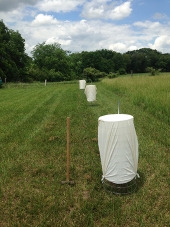posted 6 years ago
I have a very shady garden. The sunniest parts may get 5 hours but I think it mostly could be 3 to 4 average, spread throughout the day, mostly mid-day to late afternoon. Cucumbers are one of my top producers. I've been growing a landrace based off of 'Boston Pickling' and have plenty for fresh eating and pickling. The best producer is always pole beans, though. I plant a 'Kentucky Wonder' landrace that has probably been going for 12 years now and it is a no fail crop, for sure. Tomatoes can do okay and peppers are a little finicky. It seems all other conditions have to be perfect for them to really produce well. I try different varieties a lot but haven't found ones to fit my conditions yet... When I do I'll probably start saving seeds for those as well.
I finally gave up on squash of any kind. The one or two squash I might get aren't worth the space. There was an occasional better year, but powdery mildew always strikes, ending the bounty (or the misery)!
As mentioned, most herbs do well. Basil prefers the sunnier spots and if you really want a lot of thyme or oregano, give them a sunnier spot. I usually grow herbs in pots and move them around as the sunny spots change through the summer. Greens do well, too. I grow more kale than my kids appreciate. I have some red cabbage going this year that looks really good. I read somewhere that the red color basically helps the plant utilize a dimmer light more effectively. We'll see, but I am on the look out for more red leaved varieties of anything.
Lettuces, mustards, other types of beans, onions, raspberries, grapes, ground cherries, and, of course, mushrooms, are some of the other things that are or have been successful. I think to be successful you have to be willing to experiment some and then stick with what works. Good luck!









